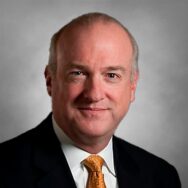Before the calendar slips too far into the new year, I want to share five important emerging trends or steps for law firm leaders to consider in 2020, each of which will have significant short and long-term implications for your firm. This little list is not about the macro level industry trends based on historical data with which we all generally agree. Rather, these are quickly developing micro-trends that are not on many radar screens yet…but need to be.
1) Significant generational pressures are building around Subjective Partner Compensation Systems – We’ve seen a real uptick in compensation system work from generationally split partnerships wherein the message from the senior guard is, “trust us, just as we trusted those who came before us,” to which the junior guard responds, “we cannot trust a black box, so please show us how you reach decisions because there must be some methodology.” The seniors’ initial reaction is often one of personal hurt and anger because they feel their integrity is being questioned. Meanwhile, the younger Partners are equally confused because such a request is consistent with their desire for more structure and rules and their overall lower levels of trust of everything/everyone. 
We all know that there are distinct differences in how different generations see the world. However, this situation can quickly escalate into damaging generational fissures so law firm leaders must listen for the cues, watch for the frustrations, and take aggressive actions when this issue becomes evident. Are there ways to find a balance between the two camps? Of course, and we have developed many because most subjective systems do have a fair amount of organized data in support of the decisions. This can be used to create more structural comfort without losing the historical value of tradition, judgement and “fairness.” The key is to figure out how far to lift the veil of secrecy while still preserving the culture of the firm and the integrity of the system.
2) Garbage data must become valuable – One of the most valuable, untapped assets in many law firms is the raw data in the various systems the firm maintains. It remains largely untapped because everyone in the organization knows that this data includes much garbage, so the garbage-in-garbage-out rule applies. The problem comes from years/decades of Partners or their administrative assistants quickly filling in boxes on a form to get a new billing code open, with no checks in place because these fields (e.g., client industry or specific matter-type) were never really used. Now that we want to use them, we cannot. The obvious fix – to have someone from the accounting department clean it all up – is unrealistic in many firms because the accounting/finance departments are staffed as leanly as possible, which results in an exclusive focus on the day-to-day operations and getting bills out and collected. Now, many firm leaders want/need to untap that data for sophisticated analyses but cannot because no one has the time to focus on this task, which must be handled by one person or a small group in order to achieve consistency in the fixes. To break through this, engage a relatively inexpensive data analyst (full time or a temp) to edit the data and prepare it to be untapped. The resulting value will exceed the cost of the “data cleaner” by many multiples.
3) Take the next step in the evolution of your profitability reporting – A key lesson learned from the last recession is that the focus of the law firm business model must shift with deliberate speed from revenue generation to profit generation. This shift has been slow, at best, and most law firms still do not really understand how they build their profit pool. While developing profitability reporting is an easy concept to support generically, most firms stumble with this, largely because they view this as a one-step jump from point A to point B and not as a complex journey that includes many steps and much change management, as illustrated by the maturity curve created by my Partner Mark Medice. 
Many law firm leaders over-simplify this task, experience significant challenges and resistance, and then give up. The first part of your process is to understand where you are in this curve. Then you can plan to get to the next point in this journey and build momentum around the concept…rather than build frustration and contempt.
4) Really understand your culture – Culture is the complex organizational glue that keeps a group of potential free-agent lawyers re-assembling as a law firm each day. The importance of each firm’s culture cannot be over-stated and needs to be understood at a deep level and captured with descriptive words that can be used to differentiate the firm from competitors when speaking with potential hires and laterals. Meanwhile, the vast majority of law firms cannot move beyond the near-universally used adjective “collegial.” There are tools and experts to help you evaluate your firm’s culture in relation to both a) competitors, and b) the ideal culture that your people want (at LawVision, our experts use the Human Synergistics tools to improve cultures and compare cultures within the context of a merger). Please move beyond “collegial”…and I don’t mean to “really collegial.”
5) Take leadership succession seriously, regardless of how many years you have left – It is amazing how many law firm leaders reach the end of their terms and they or the partnership conclude that no one else is qualified, prepared, and willing to take the position. This challenge applies to all levels of the firm (e.g., Executive Committee members, practice group leaders) so it appears with great regularity. If the job description for your law firm leader doesn’t include “identify, prepare, and usher in the next leader,” please add this task immediately!
One final point for your consideration – if you made your budget/target on December 31 in 2019 by a) cutting costs, b) reducing pre-payments in 2020, c) draining your Accounts Receivable, and/or d) otherwise doing something to offset poor revenue generation (be it from unproductive lawyers or clients using your firm as their credit bureau and paying increasingly late), then you didn’t really make budget/target. Have you already taken steps to ensure that this won’t happen again in 2020? For your changes to have an impact this year, you need to get your initiatives moving in Q1 and fully implemented before the end of Q2.
Best wishes for a great year with few surprises.


